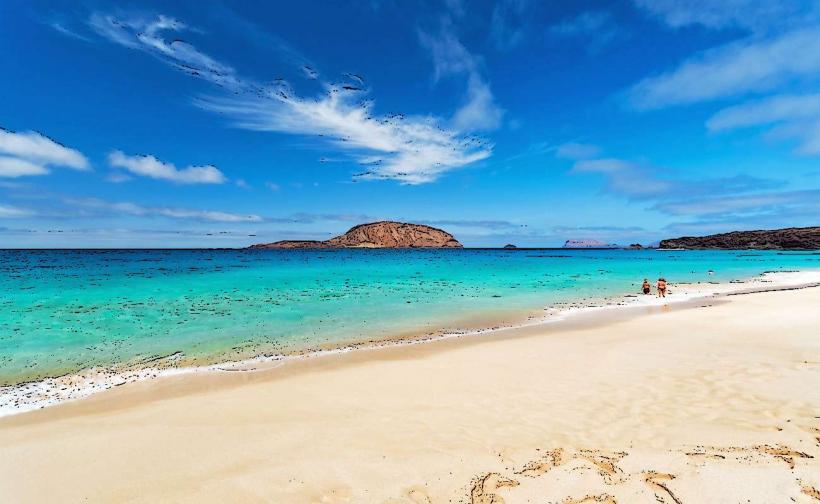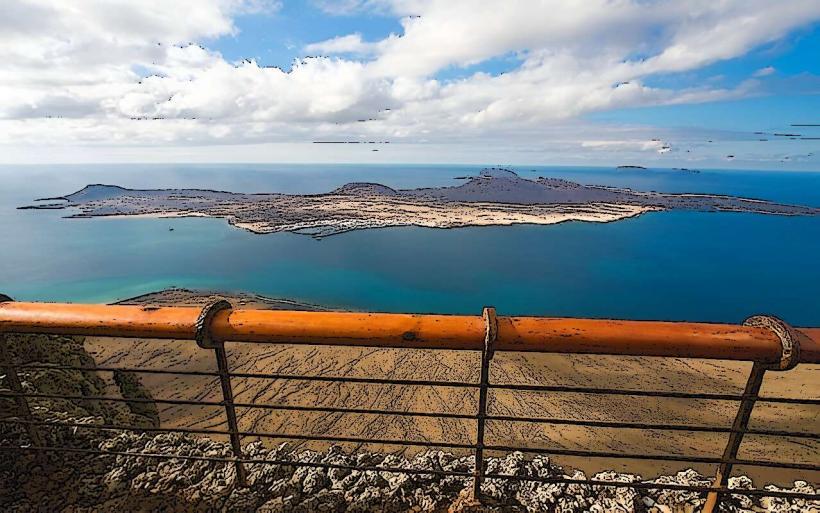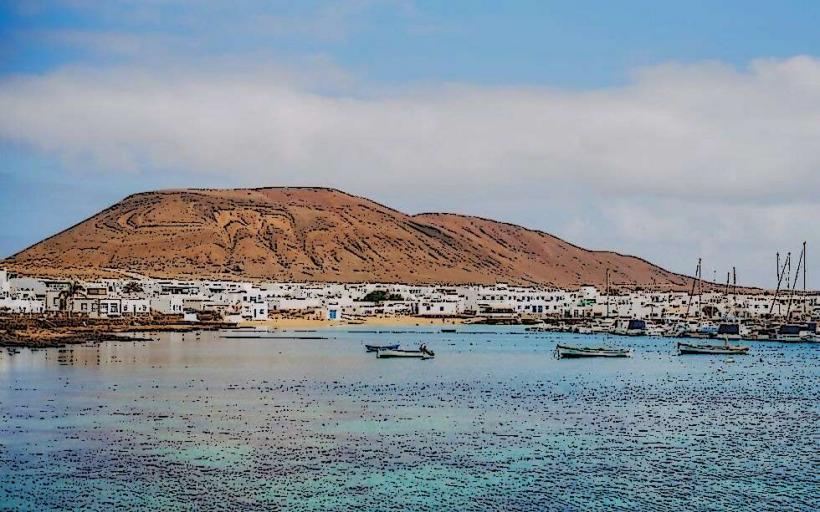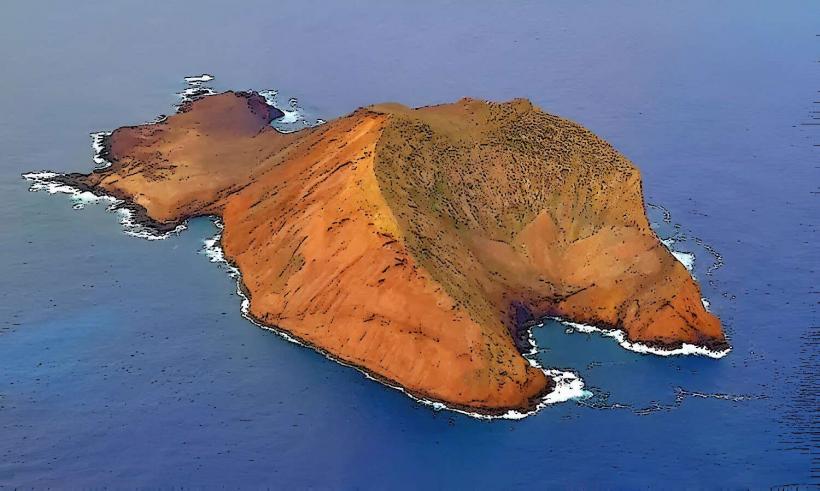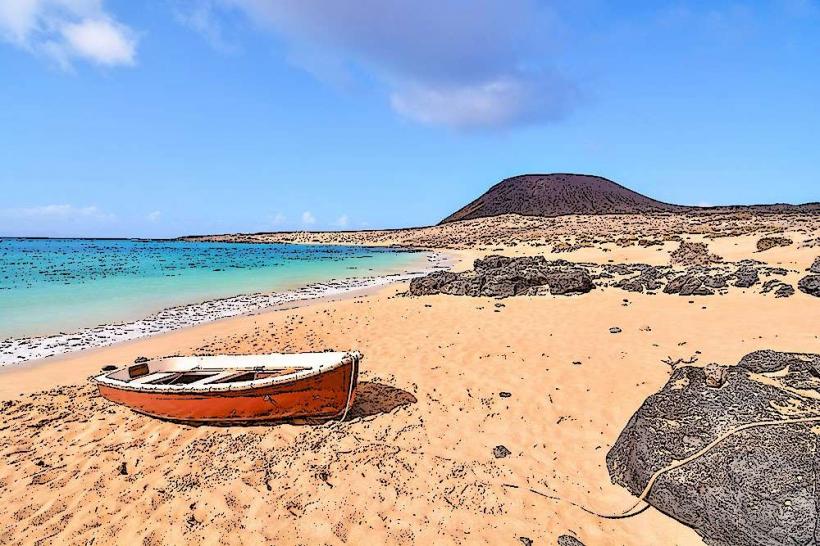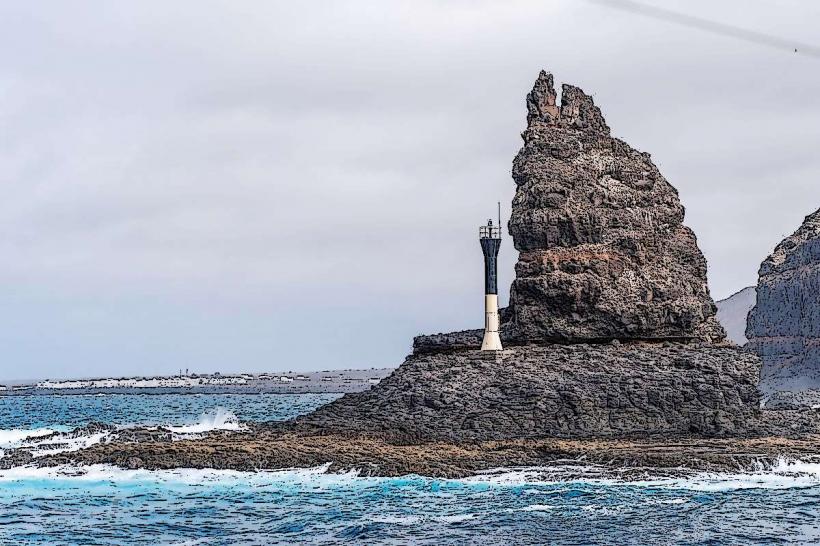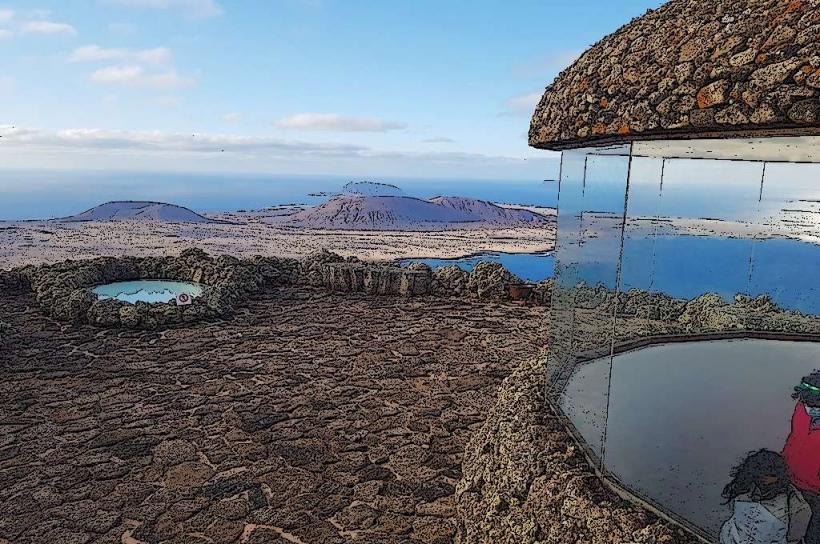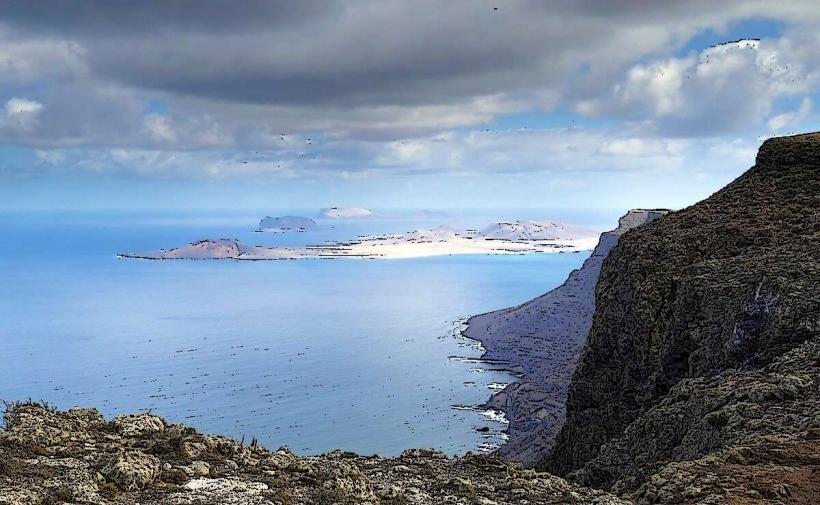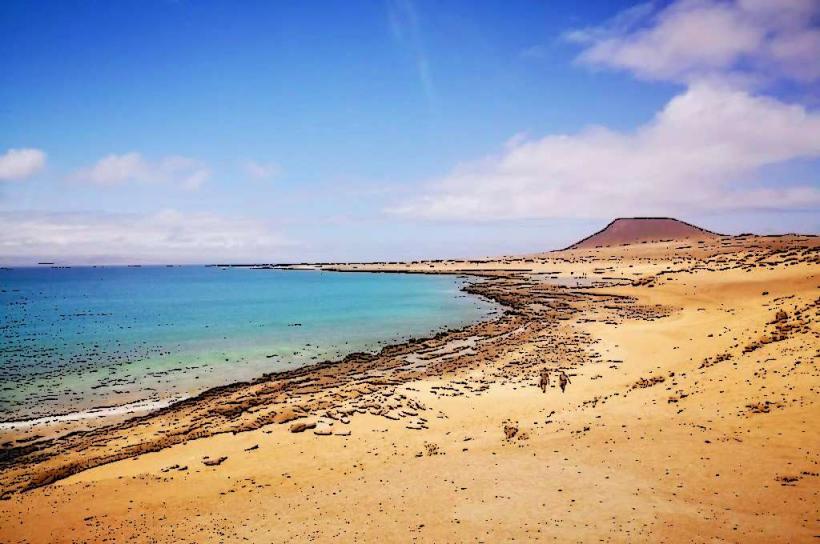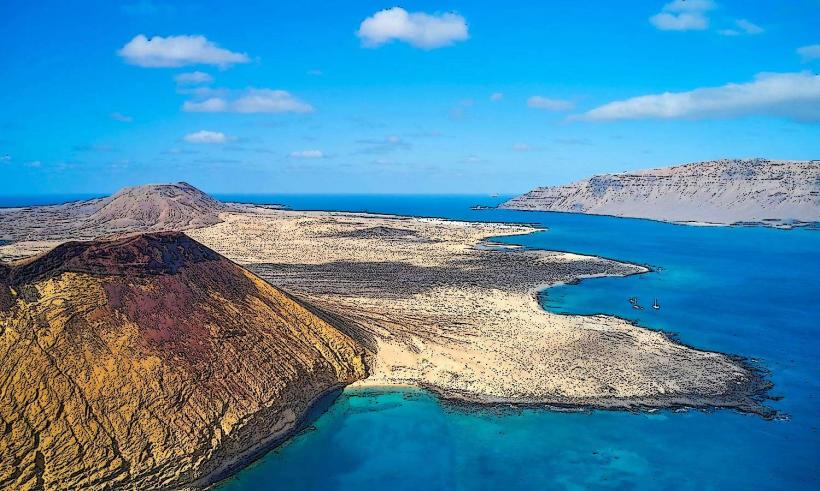Information
Landmark: Isla Graciosa Marine ReserveCity: La Graciosa
Country: Canary Islands
Continent: Europe
The Isla Graciosa Marine Reserve is a protected marine area surrounding the island of La Graciosa, part of the Chinijo Archipelago in the Canary Islands, Spain. The reserve encompasses both the waters around La Graciosa and its smaller neighboring islands, including Montaña Clara, Roque del Este, and Roque del Oeste, which together form one of the most significant marine conservation zones in the Canary Islands. This marine reserve is a crucial part of the region's efforts to preserve its rich biodiversity, including various species of marine life and unique ecosystems.
Key Features of the Isla Graciosa Marine Reserve
1. Geography and Boundaries
- Location: The reserve is located off the northern coast of Lanzarote, surrounding the island of La Graciosa and extending to its neighboring small islands, Montaña Clara, Roque del Este, and Roque del Oeste. The reserve covers an area of approximately 70,000 hectares, including both marine and coastal zones.
- Protected Area: The boundaries of the Isla Graciosa Marine Reserve are specifically designed to safeguard the waters and marine ecosystems around these islands, including rocky reefs, sandy bottoms, and coastal habitats. The reserve stretches into the open sea, encompassing the rich marine biodiversity of the region.
2. Ecological Significance
- Marine Biodiversity: The waters of the Isla Graciosa Marine Reserve are teeming with marine life. The reserve is home to a diverse range of species, including fish, mollusks, marine invertebrates, and sea turtles. These waters are particularly important for several species that rely on the reserve for breeding, feeding, and shelter.
- Marine Flora and Fauna: The reserve includes important underwater habitats, such as seagrass meadows and coral reefs, which provide food and shelter for various species of fish, including damselfish, wrasse, moray eels, and parrotfish. Additionally, octopuses, sea urchins, and cuttlefish are common in the area. The reserve also supports populations of bottlenose dolphins and loggerhead sea turtles, which can sometimes be seen in the surrounding waters.
- Seabirds: The islands around the reserve are important nesting sites for seabirds, such as Cory’s shearwater, yellow-legged gulls, and Audouin’s gulls, making it a significant location for birdwatching.
3. Conservation and Protection Efforts
- Marine Protection: The Isla Graciosa Marine Reserve was designated as a protected area to conserve its delicate marine ecosystems. This includes restrictions on certain human activities, such as fishing, to prevent overexploitation of marine resources. The goal is to preserve biodiversity and protect endangered species while maintaining the balance of the ecosystem.
- No-Take Zones: Some parts of the marine reserve are designated as no-take zones, where fishing and other extractive activities are strictly prohibited. This allows marine populations to thrive and recover, contributing to the overall health of the reserve.
- Sustainable Tourism: Efforts are made to promote sustainable tourism within the marine reserve, ensuring that visitors enjoy the area's natural beauty without damaging the environment. Eco-friendly practices, such as responsible snorkeling, diving, and boating, are encouraged to minimize human impact.
4. Marine Activities
- Diving and Snorkeling: The crystal-clear waters of the Isla Graciosa Marine Reserve make it a popular destination for diving and snorkeling. The reserve's underwater ecosystems are home to a variety of marine life, and divers can explore underwater caves, rock formations, and vibrant reefs. These activities are typically conducted with eco-friendly operators who follow sustainable guidelines to protect the marine environment.
- Whale and Dolphin Watching: The surrounding waters are home to various species of dolphins and whales. Visitors can take boat tours to observe these marine mammals in their natural habitat. Bottlenose dolphins and other species are often seen in the area, making it a prime location for marine wildlife enthusiasts.
- Kayaking and Paddleboarding: Visitors to La Graciosa and the nearby islands can also enjoy kayaking and paddleboarding along the coast of the reserve, taking in the stunning views of the volcanic cliffs and the surrounding marine environment.
5. Environmental Education and Research
- Conservation Projects: Ongoing research and conservation projects are conducted to monitor the health of the marine ecosystems within the reserve. These efforts are aimed at understanding the local marine species, mapping the ecosystems, and assessing the impact of human activities on the reserve.
- Public Awareness: Local authorities and environmental groups work to raise awareness about the importance of preserving the Isla Graciosa Marine Reserve. Educational programs and activities are available for visitors, including information about marine biodiversity, conservation efforts, and sustainable tourism practices.
6. Challenges and Threats
- Marine Pollution: Like many coastal areas around the world, the Isla Graciosa Marine Reserve faces challenges from marine pollution, particularly plastics. Efforts are made to combat pollution through clean-up initiatives and raising awareness about responsible waste disposal.
- Overfishing: Although fishing activities are strictly regulated within the reserve, there are concerns about overfishing in nearby areas that could impact the health of the reserve’s ecosystems. Ensuring sustainable practices in surrounding waters is key to protecting the reserve.
- Climate Change: The effects of climate change, such as rising sea temperatures and ocean acidification, also pose a threat to the delicate ecosystems within the reserve. Efforts to monitor and mitigate these impacts are crucial for the long-term health of the marine reserve.
Conclusion
The Isla Graciosa Marine Reserve is a vital conservation area that protects the rich biodiversity of the waters surrounding La Graciosa and the Chinijo Archipelago. It provides a sanctuary for marine life, from vibrant fish species to sea turtles and dolphins, while also serving as a unique destination for eco-tourism activities like diving, snorkeling, and whale watching. The reserve’s protected status ensures the continued preservation of these marine ecosystems, allowing future generations to enjoy the beauty and wildlife of this remarkable part of the Canary Islands. Through sustainable tourism and ongoing conservation efforts, Isla Graciosa's marine environment will remain an ecological treasure for years to come.

